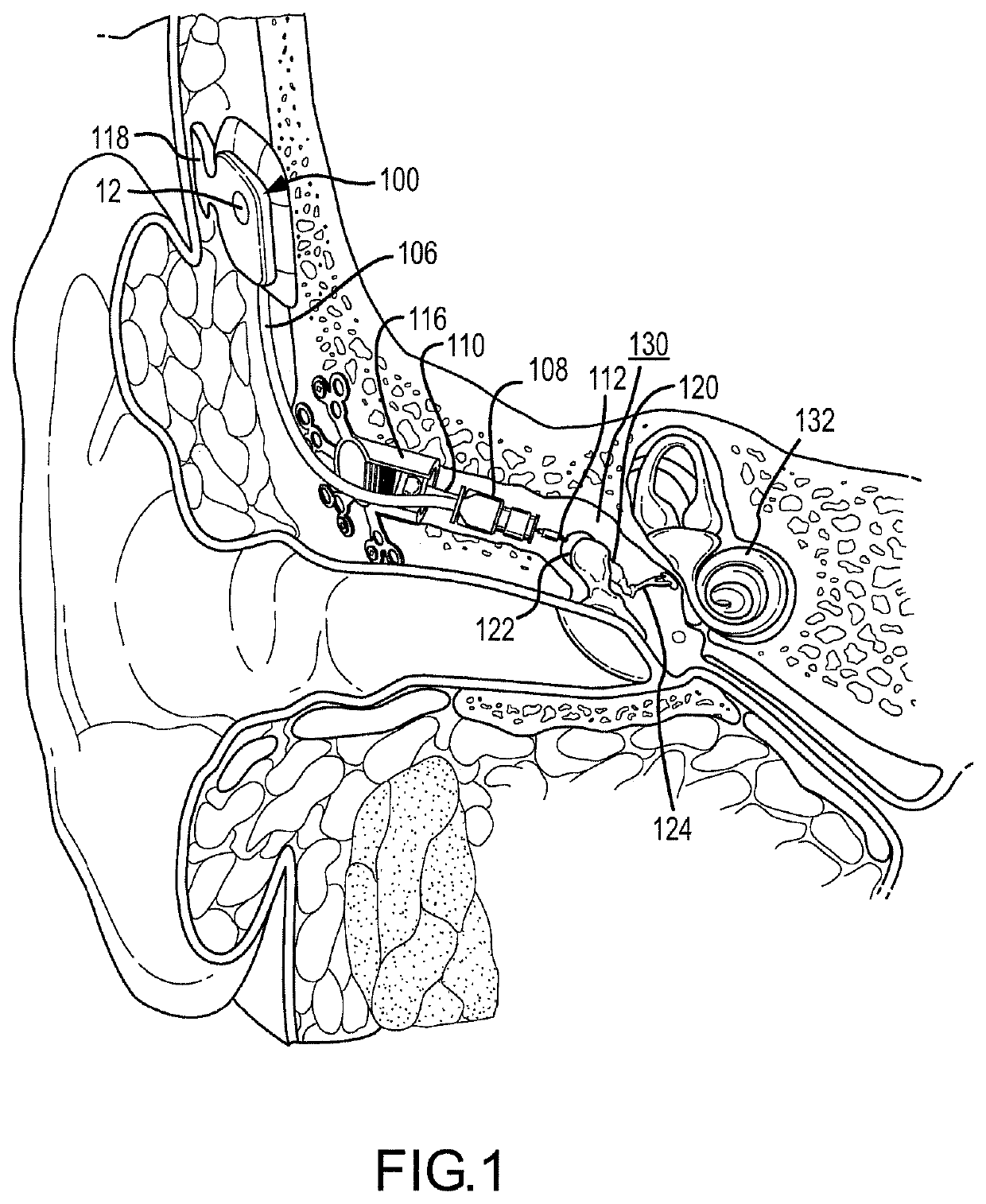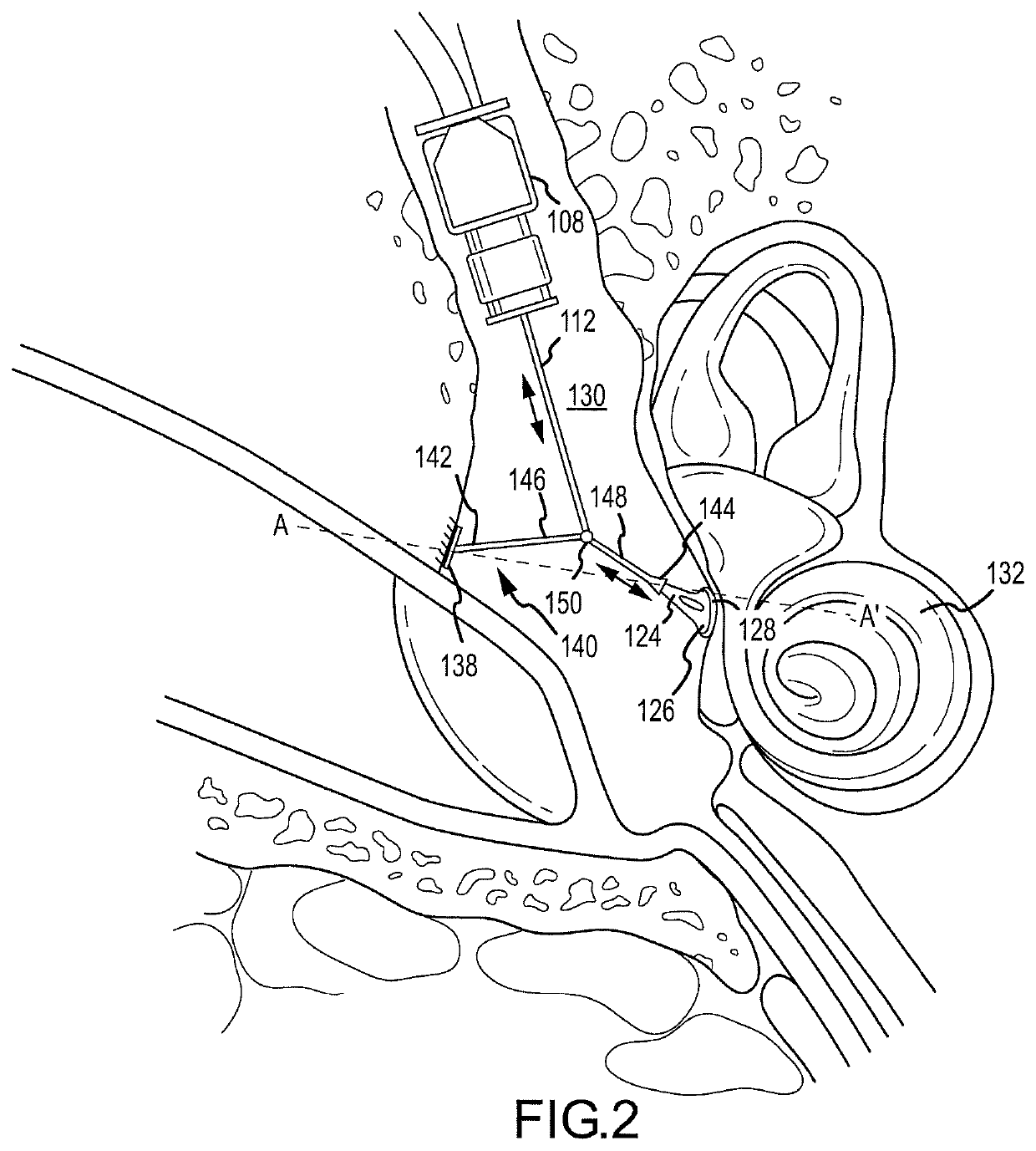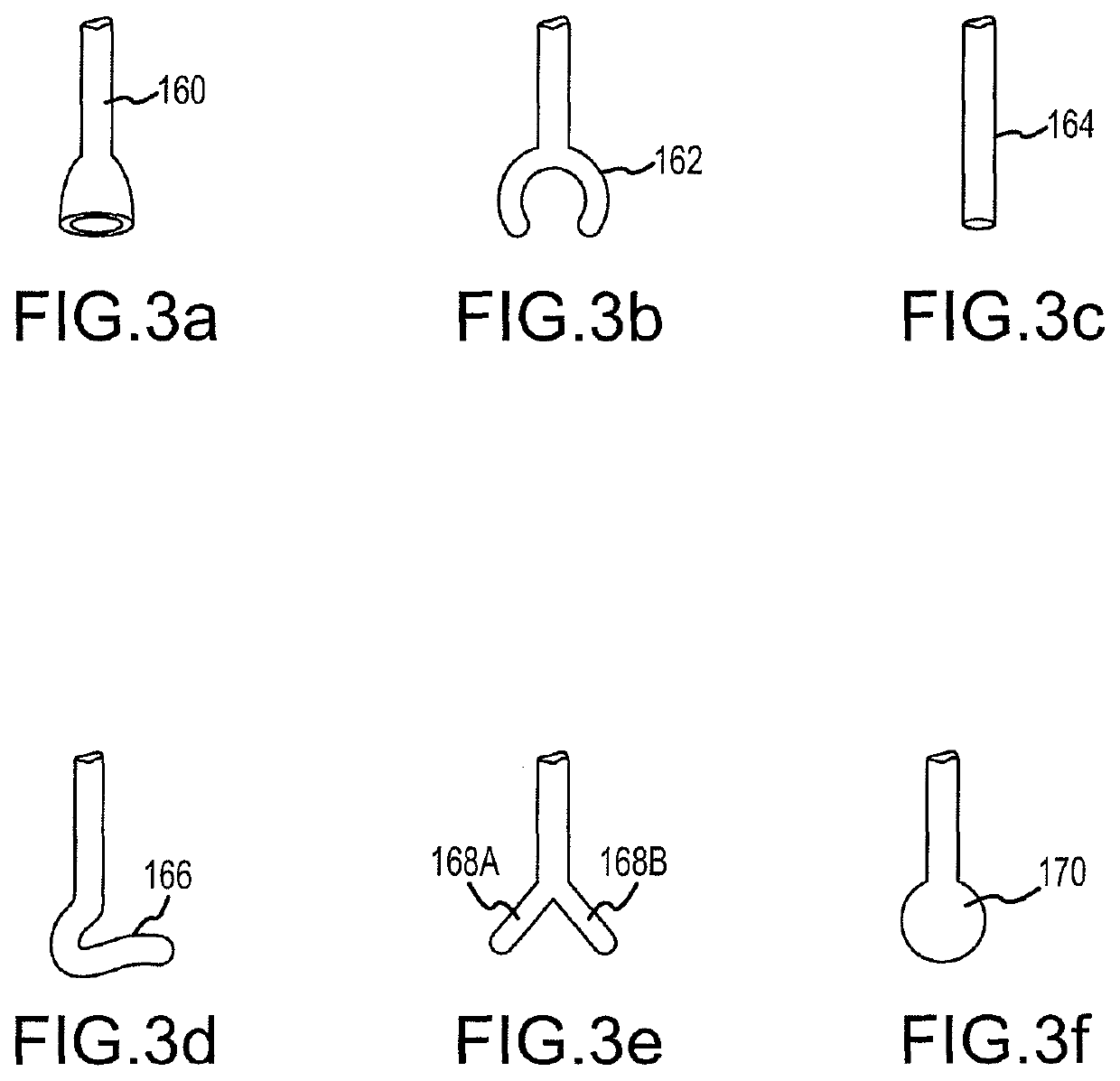Spanning connector for implantable hearing instrument
a technology of spanning connector and hearing instrument, which is applied in the field of spanning connector for implantable hearing instruments, can solve the problems of affecting the number of people with moderate or greater hearing loss, the inability of sound to pass effectively through the middle ear to the cochlea and auditory nerve, and the inability to align the vibratory actuator of the middle ear transducer with the auditory transducer
- Summary
- Abstract
- Description
- Claims
- Application Information
AI Technical Summary
Benefits of technology
Problems solved by technology
Method used
Image
Examples
Embodiment Construction
[0025]Reference will now be made to the accompanying drawings, which at least assist in illustrating the various pertinent features of the present invention. The following description is presented for purposes of illustration and description and is not intended to limit the invention to the form disclosed herein. Consequently, variations and modifications commensurate with the following teachings, and skill and knowledge of the relevant art, are within the scope of the present invention. The embodiments described herein are further intended to explain the best modes known of practicing the invention and to enable others skilled in the art to utilize the invention in such, or other embodiments and with various modifications required by the particular application(s) or use(s) of the present invention.
[0026]FIG. 1 illustrates one application of the present invention. As illustrated, the application illustrates a fully implantable hearing instrument. However, it will be appreciated that...
PUM
 Login to View More
Login to View More Abstract
Description
Claims
Application Information
 Login to View More
Login to View More - R&D
- Intellectual Property
- Life Sciences
- Materials
- Tech Scout
- Unparalleled Data Quality
- Higher Quality Content
- 60% Fewer Hallucinations
Browse by: Latest US Patents, China's latest patents, Technical Efficacy Thesaurus, Application Domain, Technology Topic, Popular Technical Reports.
© 2025 PatSnap. All rights reserved.Legal|Privacy policy|Modern Slavery Act Transparency Statement|Sitemap|About US| Contact US: help@patsnap.com



